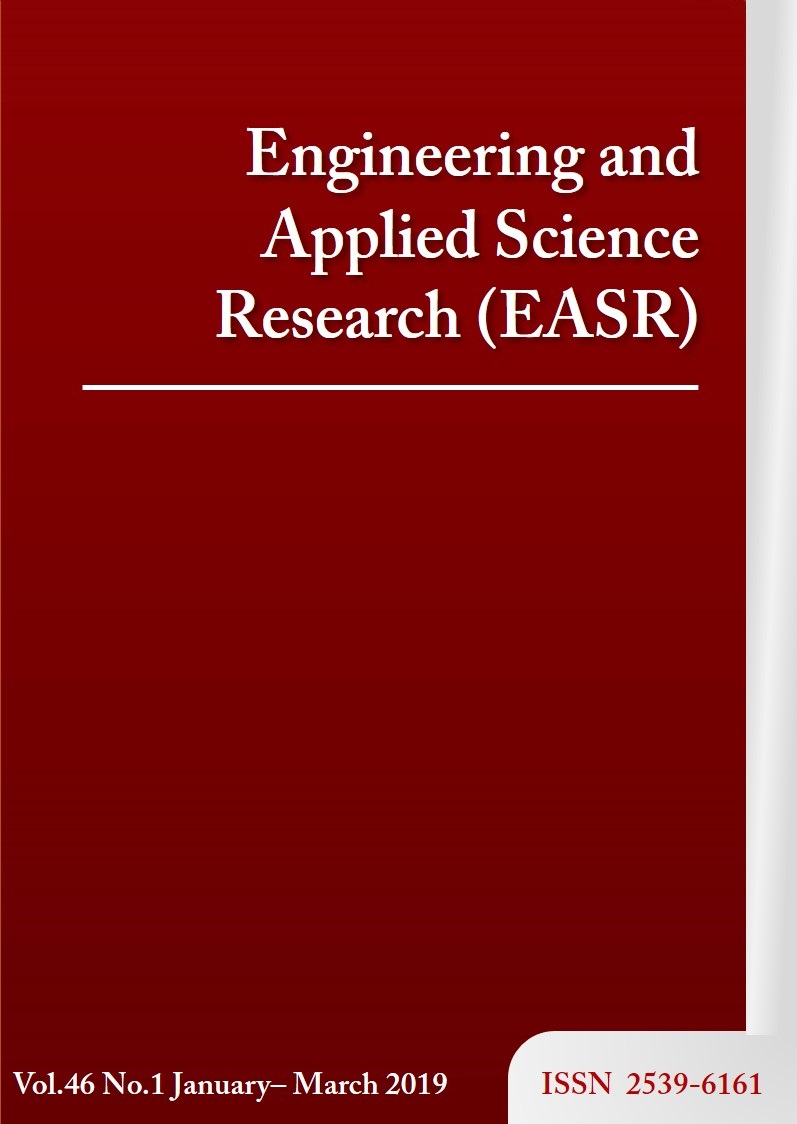Damage evaluation of fiber-reinforced concrete exposed to elevated temperatures by nondestructive tests
Main Article Content
Abstract
The paper presents a methodology for damage evaluation of fiber-reinforced concrete (FRC) exposed to elevated temperatures of 400 oC to 800 oC. The residual compressive strength fraction of cylindrical FRC specimens with a water–cement ratio of 0.47 and total fiber volume fraction of 1.2% was evaluated for mixtures with various proportions of steel and polypropylene fibers. The residual compressive strength fraction increased with the increase in the proportion of steel fiber at 400 oC. The residual strength fractions of mixtures with various fiber proportions changed less with increased exposure temperature. The effectiveness of visual inspection and ultrasonic nondestructive tests in assessing the effects of temperature exposure and the residual compressive strength fraction was evaluated. The experimental results indicate a potential application of the nondestructive tests on damage assessment of FRC with various mixture proportions. An equation for estimating the residual compressive strength fraction based on ultrasonic pulse velocity was developed.
Article Details
This work is licensed under a Creative Commons Attribution-NonCommercial-NoDerivatives 4.0 International License.
References
[2] Felicetti R, Monte FL, Pimienta P. A new test method to study the influence of pore pressure on fracture behaviour of concrete during heating. Cement Concr Res. 2017;94:13-23.
[3] Balázs GL, Lublóy É. Post-heating strength of fiber-reinforced concretes. Fire Saf J. 2012;49:100-6.
[4] Aly T, Sanjayan JG, Collins F. Effect of polypropylene fibers on shrinkage and cracking of concretes. Mater Struct. 2008;41:1741-53.
[5] Olivito RS, Zuccarello FA. An experimental study on the tensile strength of steel fiber reinforced concrete. Compos B Eng. 2010;41(3):246-55.
[6] Sappakittipakorn M, Sukontasukkul P, Higashiyama H, Chindaprasirt P. Properties of hooked end steel fiber reinforced acrylic modified concrete. Construct Build Mater. 2018;186:1247-55.
[7] Cifuentes H, García F, Maeso O, Medina F. Influence of the properties of polypropylene fibres on the fracture behaviour of low-, normal- and high-strength FRC. Construct Build Mater. 2013;45:130-7.
[8] Huang L, Xu L, Chi Y, Xu H. Experimental investigation on the seismic performance of steel-polypropylene hybrid fiber reinforced concrete columns. Construct Build Mater. 2015;87:16-27.
[9] Poon CS, Shui ZH, Lam L. Compressive behavior of fiber reinforced high-performance concrete subjected to elevated temperatures. Cement Concr Res. 2004;34(12):2215-22.
[10] Bangi MR, Horiguchi T. Effect of fibre type and geometry on maximum pore pressures in fibre-reinforced high strength concrete at elevated temperatures. Cement Concr Res. 2012;42(2):459-66.
[11] Zeiml M, Leithner D, Lackner R, Mang HA. How do polypropylene fibers improve the spalling behavior of in-situ concrete?. Cement Concr Res. 2006;36(5):929-42.
[12] Chan YN, Luo X, Sun W. Compressive strength and pore structure of high-performance concrete after exposure to high temperature up to 800oC. Cement Concr Res. 2000;30(2):247-51.
[13] Bangi MR, Horiguchi T. Pore pressure development in hybrid fibre-reinforced high strength concrete at elevated temperatures. Cement Concr Res. 2011;41(11):1150-6.
[14] Lau A, Anson M. Effect of high temperatures on high performance steel fibre reinforced concrete. Cement Concr Res. 2006;36(9):1698-707.
[15] Yan H, Lin Y, Hsiao C, Liu JY. Evaluating residual compressive strength of concrete at elevated temperatures using ultrasonic pulse velocity. Fire Saf J. 2009;44(1):121-30.
[16] Lin Y, Hsiao C, Yang H, Lin YF. The effect of post-fire-curing on strength-velocity relationship for nondestructive assessment of fire-damaged concrete strength. Fire Saf J. 2011;46(4):178-85.
[17] Suhaendi SL, Horiguchi T. Effect of short fibers on residual permeability and mechanical properties of hybrid fibre reinforced high strength concrete after heat exposition. Cement Concr Res. 2006;36(9):1672-8.
[18] American Society for Testing and Materials. ASTM C597-16: 2016. Standard test method for pulse velocity through concrete. PA: ASTM; 2016.
[19] Georgali B, Tsakiridis PE. Microstructure of fire-damaged concrete. a case study. Cement Concr Compos. 2005;27(2):255-9.
[20] Annerel E, Taerwe L. Methods to quantity the colour development of concrete exposed to fire. Construct Build Mater. 2011;25:3989-97.



